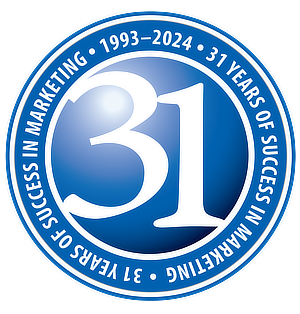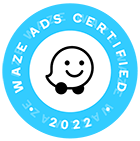Historically, the spring and summer were the “off season” for many industries, including pop-up holiday stores, home heating companies, ski resorts, outerwear manufactures and other. This was the period of family vacations, tropical cruises … or much needed home repairs. In many ways that hasn’t changed. If you are in any of those industries and reading this in May, you may already have your suitcases packed for your first trip of the summer.
But this was also a time for additional training, business diversification, and system updates; all the things that were put to the side as you dealt with 29-hour days and 8-day weeks. And for companies that have expanded into air conditioning and pool services, the next few months may be as busy as winter.
In the current economic environment, there cannot be an “off season.” You need to be communicating with your customers and potential customers year-round and using data and digital tools to get the right message delivered at the right time to the right audience.
Strategic Messaging
When planning your seasonal marketing, you need to determine what you want to communicate to your audience and when. Information related to the news cycle – relevant legislation, supply chain issues, or the global threat-du-jour – will need to be deployed quickly. New business promotions will need to be staggered: promotions in early spring to capture potential customers who were dissatisfied with your competitors’ service, and again in the latter part of the summer when consumers are starting to think about your primary services. Your retention programs should be timed around enrollment periods.
It is clear that you need a multi-pronged approach, using different tactics, messages and imagery to best reach the anticipated audience. You will also need flexibility in your campaigns, so you can quickly adapt to any change in circumstance.
How do you get a flexible, agile campaign? Preparation … and data.
Preparation requires reviewing the marketing options, developing an appropriate plan and budget, and creating assets in advance that you can modify as needed and deploy quickly.
Marketing Options
So, what are your marketing options and how do you know which is right? It can be confusing to wade through all the platforms available. Start with a list of your options: digital marketing over social media, Google search and/or display, programmatic and streaming; traditional print and broadcast; out-of-home or customer-specific marketing.
Digital campaigns offer many layers of targeting, providing you the opportunity to focus on existing customers or potential new accounts. New campaigns can be launched quickly, and assets, targets and budgets can be updated almost immediately. Most programs do not require long-term or high value commitments.
Programmatic platforms offer thousands of targeting options, including estimated mortgage values, age of home, political affiliation, community activity, hobbies and interests, and number and age of children in the home; as well as standard targeting such as estimated household income, property type, homeowners versus renters, home value, and many more. They can also target individuals going to your competitors’ addresses or entering a radius around your own. In-app videos, connected TV and podcasts can also be included in your programmatic campaign. (Read on for more information about programmatic capabilities below.)
Virtually all digital platforms offer some form of machine-learning to display the appropriate or best-performing ads to specific individuals. These systems “learn” which ads perform best in terms of user engagement, click-through rates and conversions within each audience type, and will automatically adjust the budgeting and digital bidding to maximize results. The initial campaign development requires inputting a variety of headlines, content and images that become building blocks for ads that will be automatically created in response to the individual user’s recent activities.
Platforms initially utilize all these assets to develop and deploy ads to a wide audience. Over time, each digital platform extrapolates patterns: for example, headline A with message C and image D are most successful with users sharing certain characteristics; headlines B and D with message A and image B with a different group. Throughout the length of your campaign, the digital platforms continuously assess the effectiveness of different combinations and audience traits to present the best performing messages to consumers who are most likely to respond.
Traditional campaigns of print, broadcast and out-of-home provide the broadest reach but are less agile than digital tactics. These campaigns historically offer the lowest cost-per-thousand distribution, which translates to, “your message will be seen by more people at your budget point.” Hyper-local newspapers and cable stations offer regional targeting, but as with many broadcast channels, their wide blanket will include a large number of recipients who aren’t likely to be interested in your products or services. Many of these traditional platforms require higher budgets than digital campaigns and longer-term investments. In terms of lead times, audio and video platforms can drop in new assets in a relatively short period (three-to-five days) and daily newspapers can modify your ads within two-to-three days, but weeklies must have new material several days before publication and traditional vinyl billboards could require weeks to produce and install a new campaign – at an additional expense. While there is little platform intelligence at work and less flexibility with traditional print, broadcast or out-of-home placements, these tactics remain a strong option for broad brand messaging and awareness campaigns.
Your Platform Intelligence
Your best audience is always your current customers and others who are familiar with your company. This includes current customers, of course, but also former customers or individuals who have contacted you previously, even if they did not complete a purchase.
This wealth of first-party data can be deployed for targeted, intelligent marketing. These campaigns can take several forms.
One of the most effective – as well as most agile and budget friendly – methods to utilize your first-party data is by integrating targeted, account-specific messaging with your customer self-service portal. This is where your most loyal customers will go, on a regular basis, to pay their bills, ask questions, review their past orders. These individuals already trust your company and you know a lot about them: what types of products and services they prefer, how often they visit or call, even the size of their household.
With integrated on-portal marketing, you can present these loyal customers with offers and reminders appropriate to the products and services they need, and at the proper time. Integrated platform messaging is also extremely helpful in emergency situations, where you can send email or text blasts to all customers within specific ZIP codes or your entire service area, as needed.
Your data’s usefulness is not limited to current customers using your self-service portal. The machine learning in programmatic marketing can also utilize this information:
- Your database of former customers and leads can be utilized for a new business campaign that reaches the cell phones, desktops, tablets and connected TVs of the adults living in those properties.
- If you are implementing a direct mail campaign, you can coordinate a digital campaign that targets the recipients of your postcard or letter in the weeks before and after the mailing. Messaging can introduce your company before the direct mail is received, and then be revised to reinforce your offer after the anticipated delivery date.
- Your customer database can direct programmatic campaigns as well. As with your on-portal marketing, the same account filters can be used to create lists of current homes that are candidates for new product introductions, special limited-time promotions, branding and goodwill messaging and more.
An experienced marketing professional can determine the best tactics, messaging and scheduling for your business needs, and develop creative and engaging campaign assets to make your campaign a success. Please call or contact PriMedia for a no-obligation campaign review.



